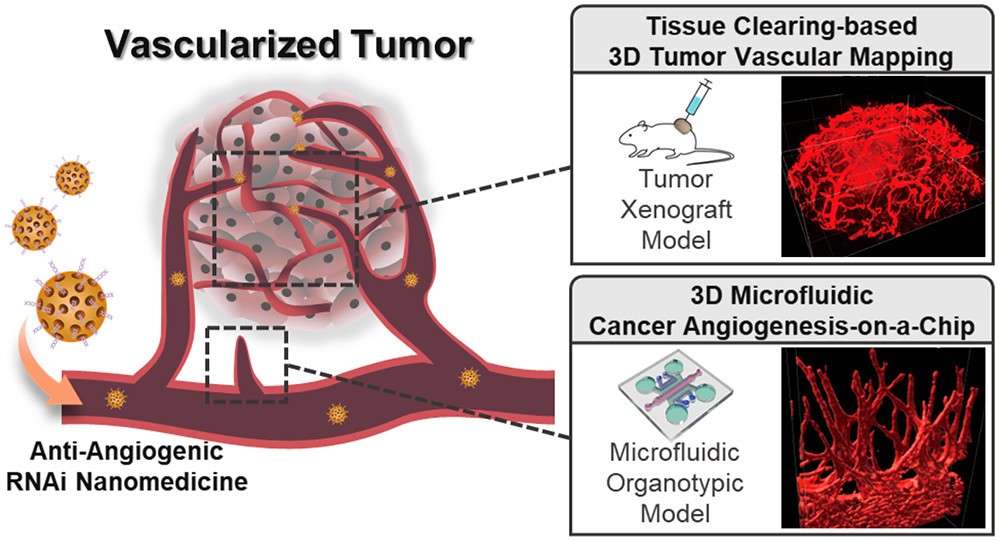Dong-Jun, who led a beautiful collaboration with Somin Lee from Prof. Noo Li Jeon’s lab and Seongchan Kim from Dal-Hee Min’s lab at SNU is published in ACS Nano! (Online publication date: Nov 24, 2020).

Three-dimensional (3D) visualization of tumor vasculature is a key factor in accurate evaluation of RNA interference (RNAi)-based antiangiogenic nanomedicine, a promising approach for cancer therapeutics. However, this remains challenging because there is not a physiologically relevant in vitro model or precise analytic methodology. To address this limitation, a strategy based on 3D microfluidic angiogenesis-on-a-chip and 3D tumor vascular mapping was developed for evaluating RNAi-based antiangiogenic nanomedicine. We developed a microfluidic model to recapitulate functional 3D angiogenic sprouting when co-cultured with various cancer cell types. This model enabled efficient and rapid assessment of antiangiogenic nanomedicine in treatment of hyper-angiogenic cancer. In addition, tissue-clearing-based whole vascular mapping of tumor xenograft allowed extraction of complex 3D morphological information in diverse quantitative parameters. Using this 3D imaging-based analysis, we observed tumor sub-regional differences in the antiangiogenic effect. Our systematic strategy can help in narrowing down the promising targets of antiangiogenic nanomedicine and then enables deep analysis of complex morphological changes in tumor vasculature, providing a powerful platform for the development of safe and effective nanomedicine for cancer therapeutics.
Together, we anticipate that the robust strategy, which combines the use of 3D in vitro microfluidic platform with 3D imaging-based analysis on in vivo whole tumor vasculature, will provide a more relevant assessment on the efficacy and safety of potential nano-therapeutics.